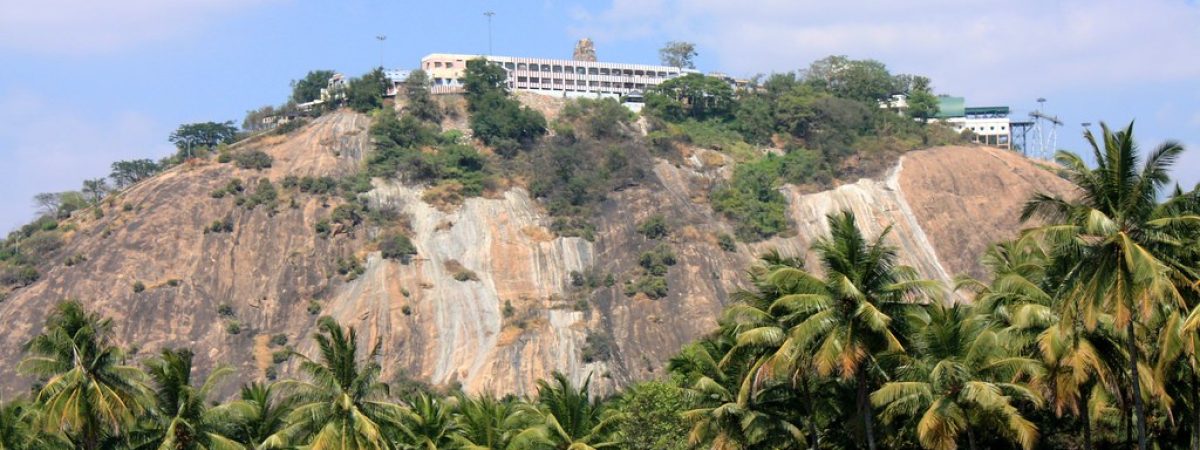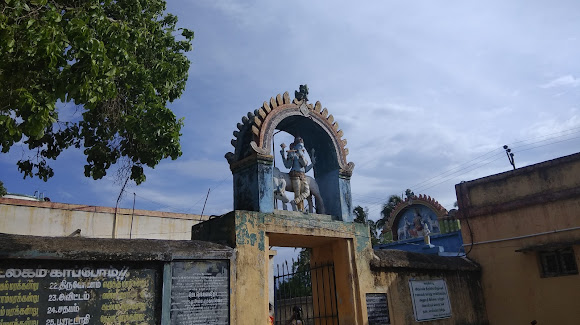Complete Guide about Palani Murugan Temple
-
Location
Palani Temple CGR9+3CV, Palani Temple Steps, Giri Veethi, Palani, Tamil Nadu 624601
-
Timings
Every Day
06:00 AM - 07:30 PM -
Entry Fee
Free Entry


Palani Murugan Temple
About Palani Murugan Temple
One of Murugan’s Six Abodes is the Arulmigu Dandayudhapani Swami Temple. It is situated in Palani, a city in the Dindigul district of Tamil Nadu, India, 100 kilometres (62 miles) southeast of Coimbatore and northwest of Madurai. Panchamritam, a five-ingredient sweet concoction, is often associated with the Palani temple.
According to Hindu mythology, Sage Narada went to Shiva’s heavenly court at Mount Kailash to give him a fruit called the gnana-palam (literally, the fruit of knowledge). He made the decision to give it to whichever of his two sons completed the first triple-circle of the planet. Murugan (Karthikeya) started his journey around the world on his mount Peacock after accepting the challenge. Ganesha, who believed that the world was nothing more than the sum of his parents, Shiva and Shakti, circumambulated them and triumphed in the fruit, though. Furious and feeling the need to grow up, Murugan decided to live alone in Palani as a hermit.
One of Hinduism’s eighteen great siddhas, sage Bogar, created and consecrated the Muruga idol in Palani out of a mixture of nine poisons known as navapashanam. In addition to the stairs and sliding elephant way, a winch and rope car service is available to transport devotees upwards. On festival days, when the temple is open from 4.30 a.m. to 8 p.m., six poojas are performed, including special poojas.
One of Hinduism’s eighteen great siddhas, sage Bogar, created and consecrated the Muruga idol in Palani out of a mixture of nine poisons known as navapashanam. In addition to the stairs and sliding elephant way, a winch and rope car service is available to transport devotees upwards. On festival days, when the temple is open from 4.30 a.m. to 8 p.m., six poojas are performed, including special poojas.
Palani Murugan Temple Official website Link www.palanimurugan.hrce.tn.gov.in
The History
Palani was first referred to as “Podhini” in Tamil Sangam literature before being renamed Palani. This temple was built in the ninth century by the ruler Cheraman Peruman. One of Lord Muruga’s six Padaiveedus, or abodes, is this temple. That is the Arulmigu Thiruvaavinankudi Temple, the Third Padaiveedu, one of the smaller temples that make up this big temple. According to historical accounts, the primary Deity Arulmighu Palaniandavar idol is made of “Navapashanam” (i.e., a combination of 9 poisonous herbs, including Veeram, Pooram, Rasam, Jathilingam, Kandagam, Gauri Pasanam, Vellai Pasanam, Mridharsingh, and Silasat), which was designed and created by Siddhar Bogar.
According to Hindu mythology, Sage Narada went to Shiva’s heavenly court at Mount Kailash to give him a fruit called the gnana-palam (literally, the fruit of knowledge). He made the decision to give it to whomever of his two boys completed the first triple-circle of the planet. Murugan (Karthikeya) started his voyage across the world on his mount Peacock after accepting the challenge. Ganesha, who believed that the world was nothing more than the sum of his parents, Shiva and Shakti, circumambulated them and triumphed in the fruit, however. Furious and feeling that he needed to grow up, Murugan decided to live as a hermit in Palani.
Palani was first referred to as “Podhini” in Tamil Sangam literature before being renamed to Palani. This temple was built in the ninth century by the ruler Cheraman Peruman. One of Lord Muruga’s six Padaiveedus, or abodes, is this temple. That is the Arulmigu Thiruvaavinankudi Temple, the Third Padaiveedu, one of the smaller temples that make up this big temple. According to historical records, the primary Deity Arulmighu Palaniandavar idol is made of “Navapashanam” (i.e., a combination of 9 poisonous herbs, including Veeram, Pooram, Rasam, Jathilingam, Kandagam, Gauri Pasanam, Vellai Pasanam, Mridharsingh, and Silasat), which was designed and created by “Siddhar Bogar.”
Temple’s Significance
It is claimed that Lord Shiva gave the Atma Linga, which was once in Shiva’s heart, to Ravan as a reward for his penance. The Atma Linga’s covering is on display at the temple. According to Hindu traditions, all Gods achieved immortality and invincibility after worshipping Lord Shiva, it is also believed.
There are four more Pancha Kshetra in the state of Karnataka, namely Dharmasthala, Nanjanagud, Gokarna, and Dhareshwara. One of these is the Murudeshwar Temple.
The huge statue of Lord Shiva, which was constructed such that the Sun’s rays fall first on it, is the temple’s most eye-catching feature.
The Kailash Nath Mahadeva statue in Nepal is larger than this Shiva statue, which is located here at the temple of Murudeshwar.
A Deep is located inside the temple’s main shrine and is said to be burning exactly as it did when the temple was first constructed. People pour oil into the raging Deep and see their image in the oil in order to receive the blessing of the God for wealth and luck.
With a height of 237.5 feet, the enormous Gopuram at the entrance is thought to be the second-tallest Gopuram in the entire world. The tallest Gopuram is found at the Srirangam temple in Tamil Nadu.

Dekho Apna Desh
The DAD of Tourism
Get Direction to Palani Murugan Temple
Near Attractions




